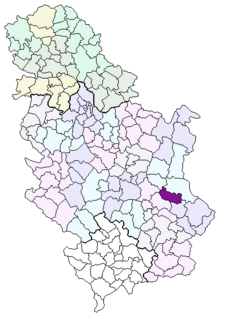
The Dumbbell Nebula is a planetary nebula in the constellation Vulpecula, at a distance of about 1360 light-years. It was the first such nebula to be discovered, by Charles Messier in 1764. At its brightness of visual magnitude 7.5 and diameter of about 8 arcminutes, it is easily visible in binoculars and is a popular observing target in amateur telescopes.
The Danish Data Protection Agency was created, following the implementation of EU Directive 95/46/EC, regarding the protection of individuals with regard to the process of personal information and the movement of such.

Ghatkesar is a satellite town of Hyderabad in the Medchal-Malkajgiri district of Telangana, India. It was formerly the mandal headquarters of Ghatkesar mandal in Keesara revenue division. Located in the outer suburbs of Hyderabad, it is a part of Hyderabad Metropolitan Development Authority.

Tole Bi is a district of Turkistan Region in southern Kazakhstan. The administrative center of the district is the town of Lenger. Population: 132,073 ; 122,721 ; 105,748 . The district is named after Töle Biy, who died there in the 18th century.
Rudy is a village in the administrative district of Gmina Krotoszyn, within Krotoszyn County, Greater Poland Voivodeship, in west-central Poland.

Sjeverin is a village in the Raška (Sandžak) area of Serbia, located in the municipality of Priboj, in the district of Zlatibor, close to the border with Bosnia. In 2002 it had a population of 337, the majority Serbs.
Eva or Eua is an archaeological location in the regional unit of Arcadia in the Peloponnese, Greece. It is mentioned as a village by Pausanias and its name is also attested by archaeological findings. It is located in the valley of the river Tanos, below the north-eastern slopes of the Parnon mountain range, between the modern towns of Astros and Kato Doliana. It is close to the site of the Byzantine Monastery of Loukou.
Jagličje is a village in Serbia, in the municipality of Gadžin Han in Nišava District. According to the census of 2002, there were 92 people.

Drajinac is a village in the municipality of Svrljig, Serbia. According to the 2002 census, the village has a population of 706 people.

Đurinac is a village in the municipality of Svrljig, Serbia. According to the 2002 census, the village has a population of 200 people.

Gulijan is a village in the municipality of Svrljig, Serbia. According to the 2002 census, the village has a population of 201 people.

Izvor (Svrljig) is a village in the municipality of Svrljig, Serbia. According to the 2002 census, the village has a population of 722 people.

Lalinac (Svrljig) is a village in the municipality of Svrljig, Serbia. According to the 2002 census, the village has a population of 445 people.

Niševac is a village in the municipality of Svrljig, Serbia. According to the 2002 census, the village has a population of 523 people.

Palilula is a village in the municipality of Svrljig, Serbia. According to the 2002 census, the village has a population of 75 people.

Periš is a village in the municipality of Svrljig, Serbia. According to the 2002 census, the village has a population of 221 people.

Prekonoga is a village in the municipality of Svrljig, Serbia. According to the 2002 census, the village has a population of 578 people.

Tijovac (Svrljig) is a village in the municipality of Svrljig, Serbia. According to the 2002 census, the village has a population of 118 people.

Vlahovo (Svrljig) is a village in the municipality of Svrljig, Serbia. According to the 2002 census, the village has a population of 163 people.

The Santa Cruz Estate is a former imperial country retreat in Santa Cruz, Rio de Janeiro. Originally a Jesuit estate and convent dating from 1570, it became a residence of the Portuguese viceroys in Brazil at the end of the 18th century. When King John VI and the royal family moved the court to Brazil in 1808, the palace became a royal residence. After the king's return to Portugal, the Prince Regent Pedro I continued to use the palace. Upon his marriage to princess Leopoldina in 1818, they spent their honeymoon in the palace. The estate became one of the imperial palaces with the independence of Brazil in 1822. Emperor Pedro II later used the palace as a summer residence.






